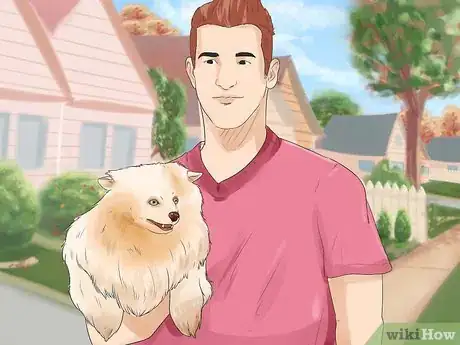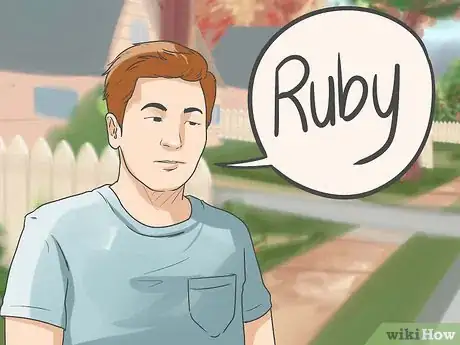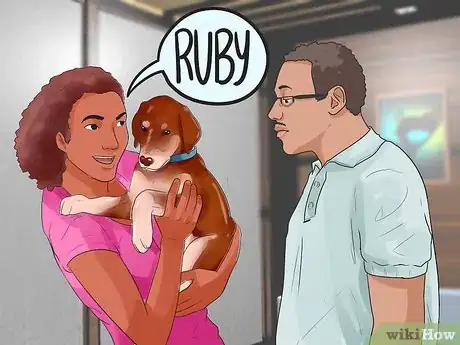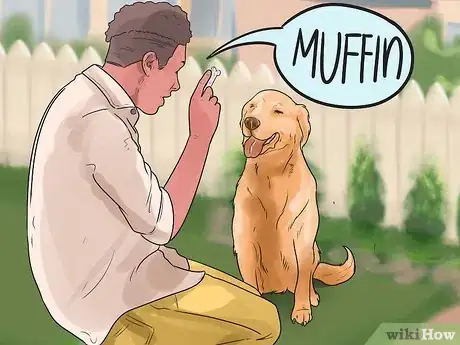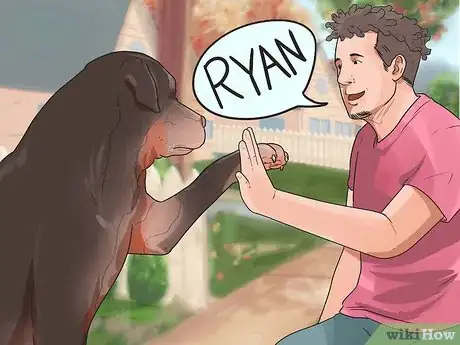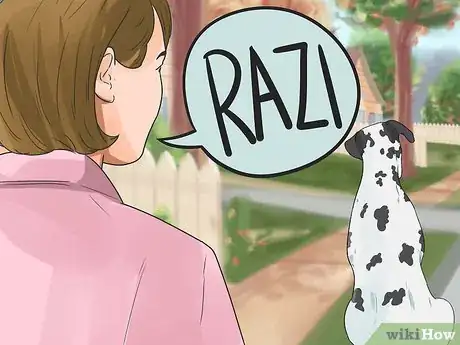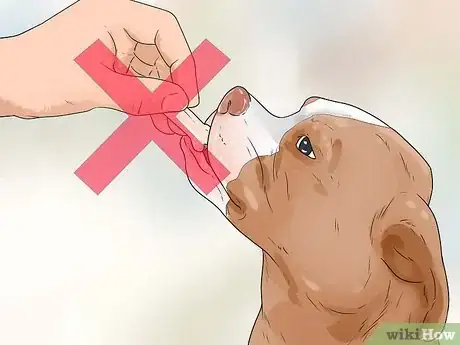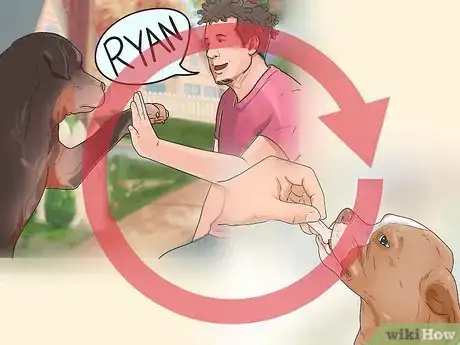This article was co-authored by Beverly Ulbrich. Beverly Ulbrich is a Dog Behaviorist and Trainer and the Founder of The Pooch Coach, a private dog training business based in the San Francisco Bay Area. She is a Certified CGC (Canine Good Citizen) Evaluator by the American Kennel Club and has served on the Board of Directors for the American Humane Association and Rocket Dog Rescue. She has been voted the best private dog trainer in the San Francisco Bay Area 4 times by SF Chronicle and by Bay Woof, and she has won 4 "Top Dog Blog" awards. She has also been featured on TV as a dog behavior expert. Beverly has over 18 years of dog behavior training experience and specializes in dog aggression and anxiety training. She has a Master of Business Administration from Santa Clara University and a BS from Rutgers University.
wikiHow marks an article as reader-approved once it receives enough positive feedback. In this case, 100% of readers who voted found the article helpful, earning it our reader-approved status.
This article has been viewed 335,435 times.
There are many reasons for wanting to change your dog's name. The good thing is that a dog can learn his name relatively quickly and easily, whether it's his first name or a name-change. By following a basic training program and being consistent, you will have your dog knowing and responding to his new name in just a few days!
Steps
Choosing A Name
-
1Be reassured that changing your dog's name is fine. While your dog will probably be confused at the beginning, dogs quickly learn new names.[1] Additionally, many experts recommend changing the names of dogs who are known, or are suspected, to have been abused or dogs who have come from a very negative environment. This is because such trauma might have led the dog to associate his original name with punishment, abuse, and fear. In these situations, you are changing more than just the dog's name; you're also helping him recover and move forward from trauma.[2]
- There's no reason to feel guilty about renaming a dog, just as long as the previous owner didn't specifically request that the name not be changed.
-
2Select a name. Once you've decided to change your dog's name, the next step will be deciding what the new one will be. For advice, read how to name your new puppy or dog. Here are some basic guidelines:
- If you know what the dog's previous name was, consider choosing something similar to the original name to help your dog learn his new name more easily.[3] For example, the names could rhyme or begin with the same sound.
- Typically, it is easier for your dog to learn a shorter name, one that is 1-2 syllables long, such as Ruby, Bonnie, Billy, etc.[4]
- Try to use 'hard' consonants or vowels, such as 'k,' 'd,' and 't'. These are easier for dogs to hear and distinguish from soft consonants, like 'f,', 's', or 'm.' For example, names like Katie, Deedee, and Tommy are names that most dogs will recognize and respond to more quickly than names like Fern or Shana.[5]
- Avoid names that sound like commands commonly used for dogs, such as "no," "sit," "stay," and "come." These can make it very difficult for your dog to know exactly what you want him to do.[6]
- Avoid picking a name that sounds like the names of other family members or household pets. This too can result in confusion for your dog and slow his learning process.[7]
- Avoid using temporary nicknames until you choose a proper name, as being called multiple names can confuse a dog and make renaming him more difficult.
Advertisement -
3Tell everyone in your household about the new name. Before you begin re-training your dog, make sure everyone knows the name is being changed and is agreement about the new name. It can be very confusing for a dog if he is being called multiple names. By letting everyone know, the training process will be more consistent.
Teaching A New Name
-
1Break out the treats. Teaching a dog his new name is very much like teaching him anything else. Similarly to when training the command "come", your dog should learn to associate his new name with treats and attention as positive reinforcement. Give everyone in the household a few treats to keep in their pockets, and ask them to occasionally call the dog's new name and give him or her a treat.
- Be sure to always say the dog's name in a positive tone of voice. Do not use your dog's name in an exasperated or upset voice or when scolding him and telling him "no." It's important that your dog learn to associate his new name with a positive experience, not punishment and unhappiness. Make sure each member of the household knows this.
-
2Take your dog to an area where you can keep his attention. Try your own backyard or another quiet outdoor space where there are no other dogs to distract him. You could also begin the training process in your own home. You can have him either on or off of his leash.
-
3Begin by saying the new name in a happy, excited voice. Then give him a treat accompanied by a lot of praise. Repeat this several times over the course of about 5 minutes. Your dog will quickly learn that his new name means he should focus on the caller.[8]
- It's important that these training sessions be short because dogs have short attention spans and are easily bored.
- Try to scatter several of these short sessions throughout the day. When outside of one of these sessions, you should say his name every time you talk to him. Also, you can occasionally say your dog's name when he is not focused on you, but don't overdo it. If he responds, be sure to give him a treat and a lot of praise.
-
4Say your dog's name when he is not focused on you. After several sessions where you say your dog's name when you have his attention, wait until he is not looking at you before saying his name. Again, say it in your happy and excited voice.[9]
- If your dog is on a leash and does not turn to you when called, gently pull him to you while saying his name again and giving him a lot of praise and a treat. This will help him associate his name with a positive experience.[10]
-
5Stop giving your dog treats gradually. Once your dog is consistently responding when you call his new name, it's time to slowly stop giving him treats. Start by only giving him a treat every other time he responds and comes when he hears his name. Then slowly reduce the treats until they are longer needed.
-
6Be persistent. While it might take your dog a while to learn his new name, if you use the name frequently and always in a happy tone, and consistently give your dog treats and praise, he will soon respond to his new name every time you say it!
- Don't be tempted to use the dog's old name. Even if you just want your dog to pay attention, or you keep letting the dog's old name slip out, this will only confuse him. If you're still in contact with the dog's old owners (for example, if you were given the dog by other members of your extended family), ask them to use the dog's new name when around him.
Expert Q&A
-
QuestionHow do you teach a dog its name?
 Melissa Nelson, DVM, PhDDr. Nelson is a Veterinarian who specializes in Companion and Large Animal Medicine in Minnesota, where she has over 18 years of experience as a veterinarian in a rural clinic. She received her Doctor of Veterinary Medicine from the University of Minnesota in 1998.
Melissa Nelson, DVM, PhDDr. Nelson is a Veterinarian who specializes in Companion and Large Animal Medicine in Minnesota, where she has over 18 years of experience as a veterinarian in a rural clinic. She received her Doctor of Veterinary Medicine from the University of Minnesota in 1998.
Veterinarian You should call the dog by its new name each time you talk to it and eventually it'll understand what its name is.
You should call the dog by its new name each time you talk to it and eventually it'll understand what its name is. -
QuestionHow long does it take for a dog to know his name?
 Melissa Nelson, DVM, PhDDr. Nelson is a Veterinarian who specializes in Companion and Large Animal Medicine in Minnesota, where she has over 18 years of experience as a veterinarian in a rural clinic. She received her Doctor of Veterinary Medicine from the University of Minnesota in 1998.
Melissa Nelson, DVM, PhDDr. Nelson is a Veterinarian who specializes in Companion and Large Animal Medicine in Minnesota, where she has over 18 years of experience as a veterinarian in a rural clinic. She received her Doctor of Veterinary Medicine from the University of Minnesota in 1998.
Veterinarian It usually won't take too long (less than a week) as long as the dog has a simple name.
It usually won't take too long (less than a week) as long as the dog has a simple name. -
QuestionCan you change a puppy's food?
 Melissa Nelson, DVM, PhDDr. Nelson is a Veterinarian who specializes in Companion and Large Animal Medicine in Minnesota, where she has over 18 years of experience as a veterinarian in a rural clinic. She received her Doctor of Veterinary Medicine from the University of Minnesota in 1998.
Melissa Nelson, DVM, PhDDr. Nelson is a Veterinarian who specializes in Companion and Large Animal Medicine in Minnesota, where she has over 18 years of experience as a veterinarian in a rural clinic. She received her Doctor of Veterinary Medicine from the University of Minnesota in 1998.
Veterinarian Yes you can but it's best to do it slowly over a week (add a little new food while taking away a little of the old each day until you've switched over to the new food).
Yes you can but it's best to do it slowly over a week (add a little new food while taking away a little of the old each day until you've switched over to the new food).
References
- ↑ http://www.petfinder.com/after-pet-adoption/changing-dog-name.html
- ↑ http://www.pawnation.com/2011/08/25/renaming-your-rescue-dog/
- ↑ Beverly Ulbrich. Dog Behaviorist & Trainer. Expert Interview. 12 February 2021.
- ↑ http://www.peteducation.com/article.cfm?c=2+2099&aid=1075
- ↑ http://www.peteducation.com/article.cfm?c=2+2099&aid=1075
- ↑ http://www.peteducation.com/article.cfm?c=2+2099&aid=1075
- ↑ http://www.peteducation.com/article.cfm?c=2+2099&aid=1075
- ↑ http://puppyintraining.com/how-to-teach-your-puppy-his-name/
- ↑ http://www.puplife.com/pages/how-to-teach-your-dog-to-recognize-their-name
About This Article
To rename a dog, tell everyone in your household what the new name is and ask them to start addressing the dog by that name. Next, say the new name to your dog in a happy, excited voice, then give it a treat and verbal praise to create a positive association. Repeat this several times for about 5 minutes over the course of several days. Then, switch to saying the name in an excited voice when the dog isn't focused on you to get its attention. Be sure to reinforce the acknowledgement with a treat to help the association stick in your dog's mind! For tips on choosing a new name for your furry friend, read on!
